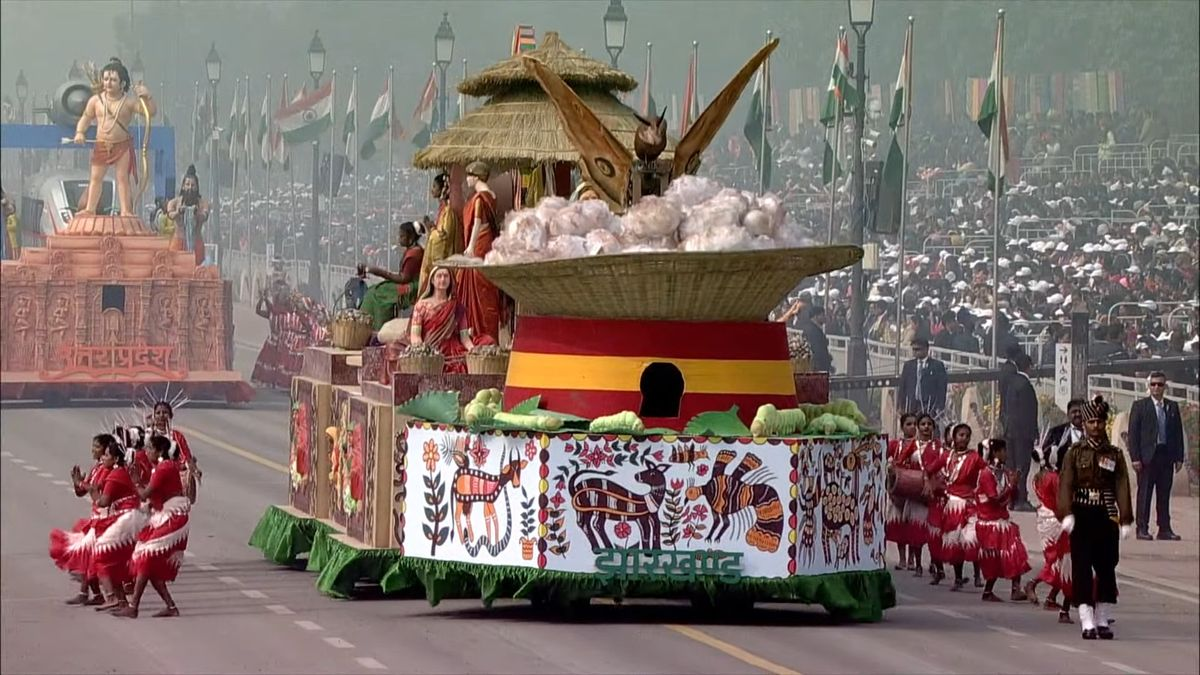Free Courses Sale ends Soon, Get It Now


Free Courses Sale ends Soon, Get It Now



Copyright infringement not intended
Picture Courtesy: www.newsdrum.in
Context: Jharkhand's Republic Day tableau highlighted the traditional skill of tribal women in Tasar silk production, showcasing the process from rearing moths to global garment distribution.
Details
Tasar Silk
Cultivating the Wild Silkworms

Cocoon Collection and Sorting
Degumming and Softening
Reeling the Silk Threads
Spinning and Weaving
Dyeing and Finishing
Conclusion
Must Read Articles:
TABLEAUX FOR THE REPUBLIC DAY: https://www.iasgyan.in/daily-current-affairs/tableaux-for-the-republic-day
|
PRACTICE QUESTION Q. The practice of "chawki rearing" in sericulture refers to: A) Raising healthy silkworm eggs to ensure strong larvae B) Splitting cocoons for easier extraction of silk fibres C) Harvesting mulberry leaves at the optimal stage for silkworm feeding D) Weaving intricate designs into silk fabric Answer: A Explanation: Sericulture is the art and science of producing silk from silkworms. One of the most important aspects of sericulture is chawki rearing, which involves raising healthy silkworm eggs to ensure strong larvae. Chawki rearing requires careful attention to temperature, humidity, hygiene, and nutrition of the silkworms. The quality of chawki rearing determines the growth, survival, and cocoon production of the silkworms. Chawki rearing is different from splitting cocoons, which is the process of cutting open the cocoons to extract the silk fibres; harvesting mulberry leaves, which is the process of collecting the leaves that are the sole food source of the silkworms; and weaving silk fabric, which is the process of creating textiles from the silk fibres. |
© 2024 iasgyan. All right reserved